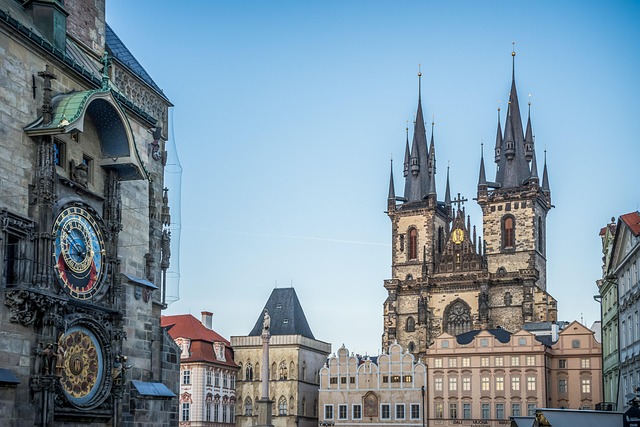Karachi, Pakistan's bustling economic hub, is governed by the Karachi Metropolitan Corporation (KMC), which oversees urban planning, infrastructure, and services across diverse districts and suburbs. KMC's strategic initiatives, such as road network improvements and smart city innovations, aim to enhance livability despite challenges like rapid urbanization, complex bureaucracy, and coordinating with various stakeholders. These efforts are geared towards transforming Karachi into a vibrant, efficient metropolitan area that promotes sustainable growth and equitable access to services for all its communities.
“Karachi, Pakistan’s economic powerhouse, is governed by the Karachi Metropolitan Corporation (KMC), whose jurisdiction encompasses a diverse urban landscape. This article delves into the intricate workings of KMC, offering a comprehensive view of its legal and administrative framework. We explore how KMC manages the city’s vast geographic area, from its bustling commercial hubs to residential neighborhoods. Furthermore, we analyze the impact and challenges faced by KMC in shaping Karachi’s future, highlighting its crucial role in urban development.”
- Understanding KMC Jurisdiction: A Geographic Overview of Karachi
- Legal and Administrative Aspects: How KMC Governs the City
- The Impact and Challenges: KMC's Role in Shaping Karachi's Future
Understanding KMC Jurisdiction: A Geographic Overview of Karachi

Karachi, Pakistan’s vibrant metropolis, is a city that has grown exponentially over the years, becoming a bustling hub with a unique identity. When discussing its jurisdiction, understanding the geographic scope of Karachi is crucial. The Karachi Metropolitan Corporation (KMC) oversees a vast area, including several districts and suburbs, each contributing to the city’s diverse character.
Geographically, KMC’s jurisdiction encompasses a diverse landscape within the Karachi metropolitan region. This includes urban areas like the Central Business District, known for its skyscrapers and bustling streets, as well as more suburban neighborhoods with a slower pace of life. The jurisdiction also stretches to include coastal regions, offering stunning views of the Arabian Sea, and several historic towns that have merged into the city’s fabric over time. This geographic diversity presents both challenges and opportunities in terms of urban planning, infrastructure development, and providing services to the varying communities under KMC’s care.
Legal and Administrative Aspects: How KMC Governs the City

In the vibrant city of Karachi, the Karachi Metropolitan Corporation (KMC) plays a pivotal role in governing and managing urban affairs. As the administrative body, KMC is responsible for ensuring the smooth functioning and development of the metropolis. It oversees various aspects, including urban planning, infrastructure development, maintenance of public spaces, and providing essential services to its diverse population.
The legal framework empowers KMC to make policies, regulate zoning, and enforce by-laws. They have the authority to collect taxes and fees, allocate resources, and take decisions regarding land use. Through its well-defined administrative structure, KMC manages different departments dedicated to specific functions, ensuring efficient governance. This structured approach allows for effective decision-making, ultimately contributing to Karachi’s progress and addressing the city’s unique challenges.
The Impact and Challenges: KMC's Role in Shaping Karachi's Future

Karachi, as Pakistan’s economic powerhouse and a bustling metropolis, faces unique challenges in urban development. The Karachi Metropolitan Corporation (KMC) plays a pivotal role in shaping the city’s future by addressing these issues. One of its primary impacts is the implementation of infrastructure projects that enhance the overall livability of the city. This includes improving road networks, developing parks, and introducing smart city initiatives to keep up with modern demands.
However, KMC also grapples with several challenges. The rapid urbanization has led to a surge in population, putting immense pressure on existing services and resources. Managing this growth while ensuring equitable access to basic amenities is a daunting task. Additionally, the corporation must navigate complex bureaucratic processes and coordinate with various stakeholders to implement effective urban planning strategies. Despite these hurdles, KMC’s proactive approach in tackling these issues will ultimately contribute to Karachi’s sustainable development and shape its future as a vibrant and efficient metropolitan area.
Karachi, known for its vibrant and diverse landscape, is shaped by the administrative prowess of the Karachi Metropolitan Corporation (KMC). This article has explored the geographic overview of KMC’s jurisdiction, delved into the legal and administrative aspects of how it governs the city, and highlighted the impact and challenges it faces in shaping Karachi’s future. Understanding KMC’s role is crucial for navigating the dynamic urban landscape of this metropolis and ensuring its sustainable growth.





Leave a Reply